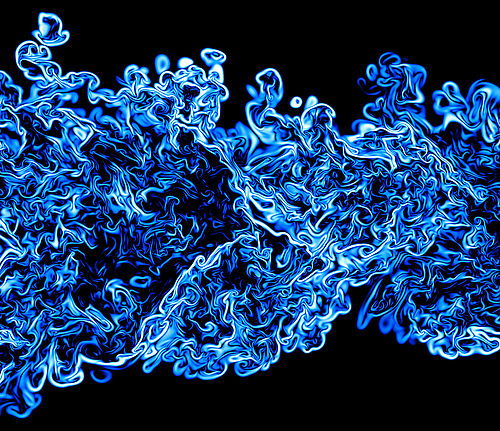TURBULENT FLOW PHYSICS
Turbulence modeling will provide motivation for the development of advanced AI/ML tools that are capable of handling the challenges outlined above. The multiscale nature of turbulence makes it particularly challenging to model, and improved algorithms to accelerate computations will have tremendous impact in the design, optimization, and control of systems involving fluids. Fluid dynamics are central to many trillion dollar industries, including health, energy, defense, and transportation, and fundamental advances in fluid dynamics will be a key technological enabler in many fields. Historically, the issue of multiscale dynamics has been dealt with by using approximate models that reduce the number of degrees of freedom in the underlying partial differential equation. For turbulent flow, the major approaches include closure models, which replace the original Navier Stokes equations with a coarse grained version that averages over (unresolved) turbulent degrees of freedom; and reduced order models which rely on either statistical approaches (e.g. model analysis) or on modeling (e.g. coherent structures) to render the dynamical system tractable. Both approaches have been highly successful and are both experiencing incredible growth due to advances in physics-informed ML.
